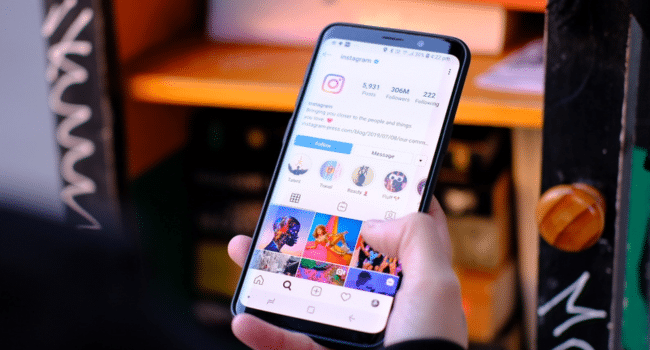Table of Contents
Instagram has evolved from a simple photo-sharing platform to one of the most powerful marketing tools for businesses. With over a billion active users, it provides brands with an unparalleled opportunity to connect with their target audience, build brand awareness, and drive sales. However, gaining followers alone isn’t enough; understanding your followers through Instagram analytics is the key to unlocking business growth.
In this article, we will explore how Instagram analytics can help businesses understand their followers better and how to leverage this data to optimize engagement, increase conversions, and grow revenue. Whether you’ve organically built a following or decided to buy active Instagram followers to kickstart your growth, analytics will help you make strategic decisions for long-term success.
Why Instagram Analytics Matter for Business Growth
Instagram analytics provide businesses with valuable insights into follower demographics, engagement patterns, and content performance. By understanding these metrics, businesses can:
- Optimize content strategy: Knowing what type of content resonates with your audience allows you to create more of what works.
- Improve engagement rates: Understanding when your audience is most active helps you schedule posts at optimal times.
- Increase conversion rates: Tracking performance metrics enables businesses to refine their marketing strategies and drive sales effectively.
- Measure ROI (Return on Investment): If you’re investing in paid promotions or have decided to get Instagram followers to boost credibility, analytics help assess whether these efforts are translating into tangible results.
Understanding Instagram analytics is key to business growth, helping you engage with the right audience. However, for a quick boost in visibility, some choose to comprar seguidores to enhance their profile’s credibility. While this can increase numbers instantly, real engagement and quality content remain essential for long-term success.
Key Instagram Metrics to Track
1. Follower Demographics
Knowing who follows you is crucial for creating relevant content. Instagram analytics provide insights into:
- Age and Gender: Helps tailor content to the dominant demographic.
- Location: Knowing where most followers are from assists in regional marketing campaigns.
- Active Hours: Understanding when followers are most active ensures posts reach the maximum audience.
2. Engagement Metrics
Engagement rates are one of the most significant indicators of content success. Key engagement metrics include:
- Likes and Comments: High engagement signals that your content resonates with your audience.
- Shares and Saves: Saved posts indicate valuable content, while shares enhance brand exposure.
- Story Replies: This metric measures direct engagement with your Instagram Stories.
3. Reach and Impressions
- Reach: The number of unique users who saw your post.
- Impressions: The total number of times your post was viewed, including multiple views by the same user.
4. Click-Through Rates (CTR)
CTR measures how often users take action after viewing your content, such as clicking a link in your bio, swiping up on stories, or engaging with a CTA (Call-to-Action).
5. Follower Growth Trends
Tracking whether your follower count is increasing, decreasing, or stagnating helps adjust strategies accordingly. While organic growth is ideal, some businesses buy followers to establish credibility faster and attract real users.
How to Leverage Instagram Analytics for Business Growth
1. Analyze and Adapt Content Strategy
If certain posts receive higher engagement, analyze what makes them successful. Is it the format, caption style, or hashtags? Replicate successful patterns to enhance content effectiveness.
2. Post at the Right Time
Using Instagram analytics, identify peak activity hours and schedule posts accordingly. This ensures maximum visibility and engagement.
3. Improve Hashtag Strategy
Hashtags help in reaching a broader audience. Analyze which hashtags drive the most engagement and refine your hashtag strategy based on performance metrics.
4. Monitor Competitor Performance
Use Instagram analytics tools to study competitors’ engagement strategies, content trends, and growth patterns. Learning from competitors helps refine your own approach.
5. Leverage Instagram Stories and Reels
Instagram Stories and Reels receive high engagement. Use analytics to see what type of short-form content resonates most with your audience and create more of it.
6. Use A/B Testing
Test different content styles, captions, and posting times to determine what works best. Regular experimentation leads to a refined strategy.
Using Analytics to Boost Sales and Conversions
1. Track Website Clicks and Conversions
Instagram analytics can track how many people click on your website link in your bio. If you’re running a business, ensure that your landing page is optimized for conversions.
2. Leverage Influencer Collaborations
If analytics indicate low engagement, partnering with influencers can boost visibility. Influencer marketing helps tap into a wider audience and build brand trust.
3. Monitor Paid Ad Performance
If you’re investing in Instagram ads, track performance metrics like impressions, CTR, and conversions to optimize campaigns. Similarly, if you buy followers to enhance social proof, monitor whether it encourages organic engagement.
The Role of Third-Party Analytics Tools
While Instagram provides built-in analytics, third-party tools like Sprout Social, Hootsuite, and Icon square offer deeper insights. These tools allow:
- Advanced competitor analysis
- In-depth engagement tracking
- Automated report generation for strategic decision-making
Conclusion
Understanding Instagram analytics is the key to maximizing business growth. Whether you’re focusing on organic strategies or choosing to buy 50 Instagram followers for a head start, the real success lies in analysing data and making informed marketing decisions. Tracking engagement, refining content, and optimizing ad strategies ensure sustainable growth and higher conversions.
Instagram is a dynamic platform, and staying updated with analytics ensures that businesses remain ahead of the competition. So, start leveraging Instagram insights today to drive better engagement, increase sales, and establish a strong brand presence!
